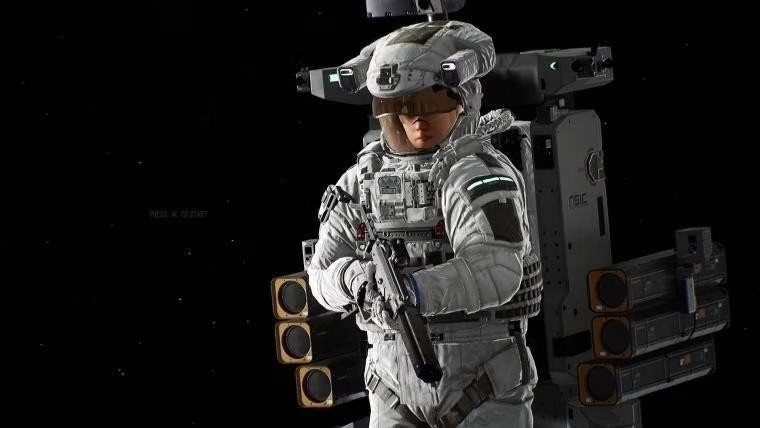Understanding the scientific consequences of discharging a firearm in a vacuum

You might think that without air, a gun wouldn't even fire. That's a common misconception, and it's wrong. Modern ammunition is designed to be self-sufficient. The gunpowder, or propellant, contains its own oxidizer – a chemical that provides the oxygen needed for combustion. This means that whether you're in a bustling city or the silent expanse of space, the chemical reaction that propels a bullet remains largely the same. Pull the trigger, and the primer ignites the propellant, creating rapidly expanding gases that force the bullet out of the barrel at considerable speed.
Here's where things get really interesting. On Earth, a bullet's trajectory is significantly influenced by air resistance, or drag. It slows down, arcs, and eventually falls. In space, however, there's no air. None. This means that once a bullet leaves the barrel, it will continue traveling in a straight line at its muzzle velocity, unimpeded, until acted upon by another force – primarily gravity, but on an orbital scale. Simulations suggest a 9mm bullet fired from Earth orbit could potentially travel hundreds of thousands of kilometers, or even orbit the Earth for years, before its path is significantly altered. It's a stark reminder of how much we rely on our atmosphere for everyday physics.
The absence of significant atmospheric drag also means that the bullet won't follow the familiar parabolic arc we see on Earth. Instead, it will travel in a straight line relative to the shooter. This straight-line path, combined with the bullet's immense velocity, makes it a potentially hazardous piece of space debris. Think of it like throwing a rock in a perfectly still pond – it just keeps going. In the cluttered environment of Earth orbit, this projectile could join the thousands of other pieces of debris, posing a threat to satellites and spacecraft.
This is perhaps the most immediate and visceral consequence of firing a gun in space. Newton's Third Law of Motion – for every action, there is an equal and opposite reaction – becomes incredibly apparent. When the gun pushes the bullet forward, the shooter is pushed backward with equal force. On Earth, our feet are planted, our bodies are anchored, and we absorb that recoil. In the weightless environment of space, there's nothing to brace against.
The effect of the recoil depends on the firearm's power and the shooter's mass. Firing a standard handgun, like a 9mm pistol, would impart a noticeable push. An astronaut weighing around 80 kilograms could find themselves drifting away from their spacecraft at a speed of 1-2 kilometers per hour. While this might not sound like much, it's enough to make returning to your vessel a significant challenge, potentially turning a simple maneuver into a desperate rescue operation.
But what about larger weapons? Imagine firing a rifle or even a shotgun-like device. The recoil could be substantial, propelling the shooter at much higher speeds. In the worst-case scenario, this uncontrolled momentum could even cause an astronaut's suit to breach, leading to catastrophic consequences in the vacuum. It's a sobering thought, isn't it?
One of the most striking differences between firing a gun on Earth and in space is the absence of sound. On our planet, the muzzle blast is a significant part of the experience. In space, there's no medium for sound to travel through. You'd see a brief flash, perhaps a puff of gas, but hear absolutely nothing. It would be an unnervingly silent event, adding to the profound isolation of the environment.
Beyond the immediate recoil, the bullet itself becomes a long-term threat. As mentioned, without air resistance, it travels much farther and faster. This projectile, essentially a tiny, high-speed missile, could persist in orbit for years, a silent, invisible danger. The sheer volume of space debris is already a growing concern, and introducing more unpredictable, high-velocity objects only exacerbates the problem. It's a scenario that underscores the importance of responsible conduct in space, even in hypothetical situations.
While it sounds like pure science fiction, the idea of firearms in space isn't entirely new. The Soviet Union, for instance, developed the TP-82 survival pistol for cosmonauts, intended for use during emergency landings. Though never fired in orbit, its existence hints at past considerations. Today, with advanced computer simulations, scientists can model these scenarios with remarkable accuracy. These simulations help us understand the physics involved and reinforce why such actions are strictly forbidden. They're not just about theoretical physics; they're about safety and the preservation of our increasingly crowded orbital environment.
So, while you're unlikely to ever witness a space shootout, understanding the physics behind it offers a fascinating glimpse into the unique challenges and dangers of operating in a vacuum. It's a world where even the simplest actions have amplified consequences.